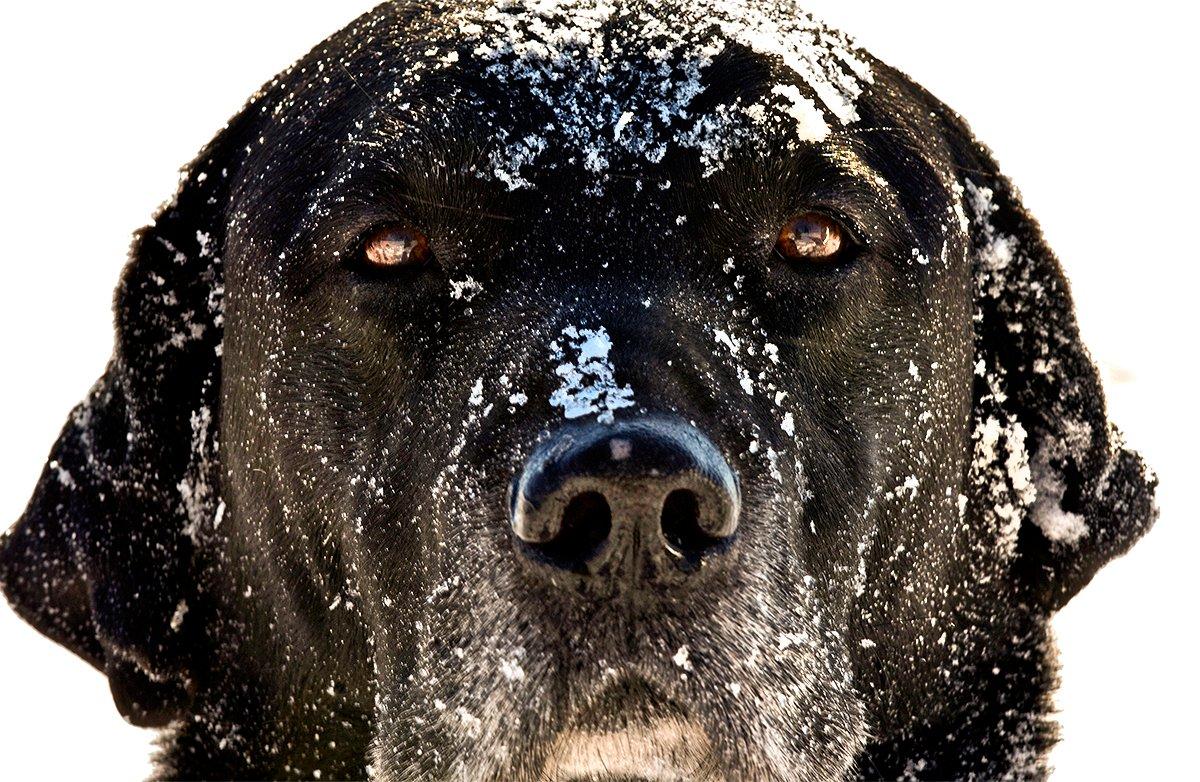Your canine pals can withstand frigid conditions, but they're not infallible
Some lessons aren't meant to be learned the hard way, especially when they involve your No. 1 hunting partner.
Twenty-some years ago, a howling northwest blow ripped across Wisconsin, and wind chills plummeted below zero. The lake we hunted would freeze the next day, and the ducks flew like mad.
My buddy and I sat with his 11-month-old Lab at a favorite blind, enjoying great action on buffleheads and goldeneyes. We'd killed several birds already when a huge flock of butterballs angled toward our spread and flared 30 yards out. We stood and fired, dropping four fat drakes. My friend heeled his dog to the shoreline and sent him to retrieve the first three birds. The pooch complied wonderfully. On his way to the fourth duck, however, he suddenly turned and started swimming back. My pal whistle-stopped him and gave him the back command, but the pup continued toward shore. We couldn't understand it — until the dog reached the beach, wobbled and collapsed.
Immediately, we realized he had hypothermia and was near death. My buddy cradled the pup in his arms, and we rushed him into the nearby house of a friend. We ran a sink full of warm water in the basement and held the dog in the heat until he finally stopped shivering. My friend then wrapped the dog in a blanket and drove him home while I walked a quarter-mile down the shoreline to retrieve the bufflehead.
The lesson was grim but simple: Because of their marvelous coats, dogs tolerate cold water much better than humans, but they're not invincible. The water temperature that day was probably in the low 30s, and my buddy's pup should have been given one or two retrieves at the most. By prolonging his exposure to the near-freezing water, we almost killed him.
Nowadays, I take simple precautions with my dog when it's frigid. I limit her retrieves to short stuff that keeps her in the water only a minute or two. Then, I make sure the dog can shake off and dry sufficiently. Also — and this is critically important — I position the dog so she doesn't have to stand in cold water. That's easy when hunting from a boat but difficult in many free-lance marsh or bog setups. Nothing will make a dog hypothermic like prolonged exposure to cold water, even if the air temperatures is in the 30s. Keep their feet, legs and especially their bellies out of the water. Use a commercial stand to keep your pup high and dry in the timber, and at least sit your pooch on a muskrat hut or behind you on dry ground in marsh settings.
Many folks outfit their dogs with heavy, insulating neoprene vests, some of which include flotation. These can be great — provided they fit correctly. If the vest is too loose, it can actually trap water between the neoprene and the dog's skin, making the pooch colder than if it were without the vest. And if a vest is too tight, it can rub and scrape in tight spots, such as the armpits, exposing the dog to the risk of infection. My Lab has a large chest but skinny waist, and vests don't fit her very well. Nowadays, I only use one during the most bitter conditions or if she'll likely have to break ice.
In ultra-cold situations, it's never a bad idea to keep your vehicle or a portable heater nearby. And of course, train with your dogs during the off-season to make sure you can call them off a bird with the whistle, if needed. Don't risk your buddy's health on a bird you can chase down with the boat or on foot.
Further, learn to recognize the symptoms and remedies for hypothermia. According to petmd.com, weakness, shivering and a lack of mental alertness can indicate mild hypothermia. Muscle stiffness, low blood pressure, a stupor-like state and slow, shallow breathing — symptoms my friend's dog showed during that freezing hunt — indicates moderate hypothermia. Severe hypothermia might result in a coma, dilated pupils, difficulty breathing and an inaudible heartbeat.
Petmd.com suggests these steps for dogs showing signs of hypothermia: Warm some blankets (in a dryer or on a radiator), and then wrap the animal in them. Wrap a hot water bottle in a towel, and place it against the dog's abdomen. Don't use an unwrapped bottle because it might burn the dog's skin. If the dog is conscious, give it warm fluids to drink. Check the dog's temperature every 10 minutes. If it falls below 98 Fahrenheit, seek immediate veterinary care. After the dog's temperature increases to higher than 100, remove the water bottle, but keep the animal in a warm room.
Above all, learn to recognize and avoid situations in which a dog might become hypothermic. Err on the side of caution. Everyone hates to lose a bird, but you'd hate far more to lose your best friend.
Click here for more Realtree waterfowl hunting content. And check us out on Facebook.







